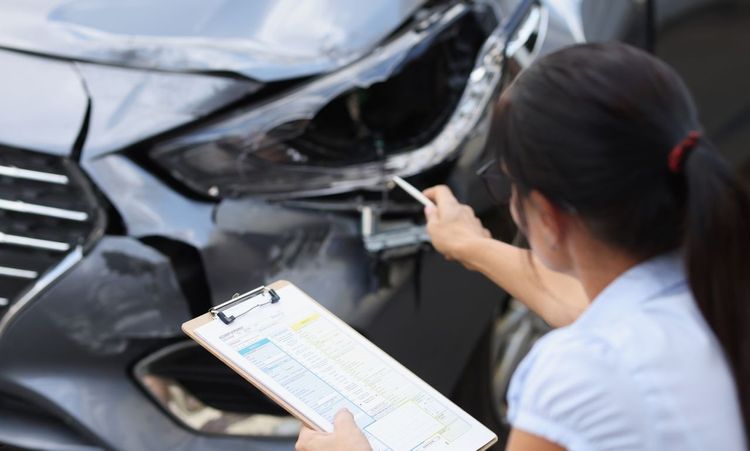Nobody wants to deal with a car accident. Yet here you are, probably wondering what this means for your wallet. Your insurance premiums are about to change, and not in a good way.
Most drivers see their rates jump anywhere from 20% to 40% after an at-fault accident. Some face even steeper increases. The exact amount depends on who caused the crash, how bad it was, and your driving history.
Insurance companies aren't exactly forgiving when it comes to accidents. They see dollar signs every time you file a claim. Your "low-risk" status? Gone faster than you can say "fender bender."
But don't panic just yet. There are ways to minimize the damage to your bank account. Understanding how insurance companies calculate these increases gives you power. Knowledge is your best defense against sky-high premiums.
How Long Does an Accident Affect My Insurance Rate?
Your accident isn't going anywhere anytime soon. Insurance companies typically keep it on your record for three to five years. During this time, you'll pay higher premiums every month.
The exact timeline varies by state and insurance company. Some states force insurers to drop accidents after three years. Others allow them to stick around for five full years. Check your state's rules to know what you're dealing with.
Year one hits the hardest. That's when you'll see the biggest rate spike. Things usually get better in years two and three, assuming you don't crash again. By year four, your rates might actually resemble what normal people pay.
Here's something interesting: your previous driving record matters more than you think. Clean drivers often get more lenient treatment than serial speeders. Insurance companies reward good behavior, even after you mess up.
The accident's severity also plays a role. A minor parking lot scrape won't haunt you as long as a major highway collision. Multi-car accidents with injuries? Those stick around longer and cost more.
How Do At-Fault vs. No-Fault Accidents Affect My Insurance Rate?
At-Fault Accidents Hurt the Most
At-fault accidents are the insurance equivalent of financial punishment. When you cause a crash, your insurance company opens their checkbook. They pay for the other driver's car, medical bills, and whatever else got damaged.
This spending spree doesn't make insurers happy. They pass the cost back to you through higher premiums. Rate increases of 25% to 50% are typical after at-fault accidents. Serious crashes can push increases even higher.
Your insurance company now sees you as a walking liability. Statistics show that drivers who cause one accident are more likely to cause another. Fair or not, that's how the business works.
No-Fault Accidents Aren’t Always Free
No-fault accidents should be easier on your wallet. Another driver caused the crash, so your insurance company doesn't pay for damages. Logic says your rates shouldn't increase, right?
Wrong. Many insurance companies still raise rates after no-fault accidents. They claim that any accident involvement increases your risk profile. It's frustrating, but some insurers get away with it.
The good news? No-fault increases are usually smaller. Most companies limit these to 10% or less. A few don't raise rates at all for your first no-fault accident.
State laws provide some protection here. California's Proposition 103 prevents insurers from penalizing drivers for no-fault accidents. Other states have similar consumer protections.
Do Insurance Rates Go Up After No-Fault Accidents?
This question annoys drivers everywhere. You didn't cause the accident, so why should you pay more? Unfortunately, many insurance companies think differently.
Insurance companies use complex math to predict future claims. Their data shows that drivers involved in multiple accidents file more claims overall. Fault doesn't matter in their calculations.
About 60% of major insurers raise rates after no-fault accidents. The increases are usually small, but they still sting. Progressive and State Farm handle these situations differently, so shop around.
Some states fight back against this practice. They've passed laws preventing no-fault rate increases. Unfortunately, most states allow insurers to do whatever they want.
Your driving record before the accident influences the decision. Drivers with clean histories often avoid no-fault penalties. Multiple violations make you an easy target for rate increases.
The accident's circumstances matter too. Rear-end collisions rarely trigger rate increases. Multi-car accidents with disputed fault? Those are different stories.
Will Comprehensive Claims Increase My Rate?
Comprehensive coverage handles the weird stuff that happens to your car. Hail damage, theft, vandalism, and acts of nature all fall under this category. These claims typically don't affect your rates.
Insurance companies recognize that comprehensive losses aren't your fault. You can't control the weather or prevent determined thieves. Random events don't indicate poor driving skills.
Most insurers treat comprehensive claims completely separate from collision claims. Filing for storm damage won't label you as a high-risk driver. Your rates should stay stable.
However, patterns change everything. File three comprehensive claims in two years? Your insurer might start asking questions. They'll wonder why bad luck follows you everywhere.
Large comprehensive claims sometimes trigger rate reviews. A $15,000 theft claim draws more attention than a $500 windshield replacement. Insurers might investigate your security measures.
Glass claims are usually exempt from rate increases. Most companies consider windshield repairs routine maintenance. They want you to drive safely, not squint through cracked glass.
What Should I Do After an Accident?
Your actions after an accident directly impact your insurance rates. Smart moves can minimize rate increases. Stupid mistakes make everything worse.
Safety comes first, obviously. Check for injuries and call 911 if needed. Once everyone's safe, start documenting everything. Take photos of all vehicles, damage, and the accident scene.
Get witness contact information if possible. Their statements can help determine fault. Police reports also carry significant weight with insurance companies.
Call your insurance company immediately. Most have 24/7 claim hotlines for emergencies. Quick reporting shows responsibility and speeds up the process.
Be honest but careful with your words. Describe what happened without admitting fault. Let the investigators determine who caused the accident. Your job is to provide facts, not opinions.
Keep detailed records of everything. Medical bills, repair estimates, rental car costs, and missed work all matter. Document phone calls and emails with your insurance company.
Consider hiring a personal injury attorney for serious accidents. They understand insurance company tactics and can protect your interests. Many work on contingency fees, so you don't pay unless they win.
How Accident Forgiveness Can Help
Accident forgiveness programs are like insurance for your insurance. They protect you from rate increases after your first at-fault accident. Think of them as a "get out of jail free" card.
Types of Accident Forgiveness
Large Accident Forgiveness covers major at-fault accidents. This benefit can save you thousands of dollars over several years. Some insurers include it automatically, while others charge extra.
Small Accident Forgiveness handles minor fender benders and low-cost claims. These programs typically cover accidents under $1,000 or $2,000. They're perfect for parking lot scrapes and similar incidents.
Who Qualifies and What It Costs
Eligibility requirements vary wildly between companies. Most require several years of clean driving before activation. Some insurers offer immediate forgiveness to attract new customers with good records.
The cost ranges from $20 to $100 per year. This investment easily pays for itself if you have an accident. Compare the cost against potential rate increases to see if it's worthwhile.
Remember that forgiveness usually applies only once. Your second accident will still result in rate increases. The programs also don't erase the accident from your driving record.
Conclusion
Car accidents mess with your insurance rates in predictable ways. At-fault accidents hurt the most, causing increases of 20% to 50% or more. No-fault accidents typically result in smaller increases.
The pain lasts three to five years, with the first year being the worst. Comprehensive claims rarely affect rates, and accident forgiveness programs can provide protection.
Your best strategy is preparation and smart decision-making. Shop around for insurance quotes regularly. Different companies treat accidents differently, and some specialize in high-risk drivers.
Safe driving after an accident is crucial. Insurance companies reward improved behavior with gradually lower premiums. One accident doesn't have to define your insurance costs forever.
Remember that insurance is a business. Companies want to make money, not help you save it. Understanding their methods helps you fight back against unreasonable rate increases.




